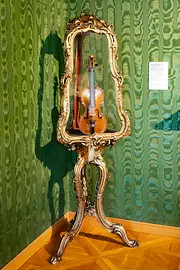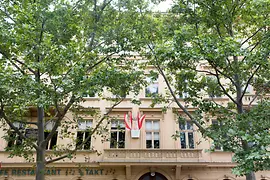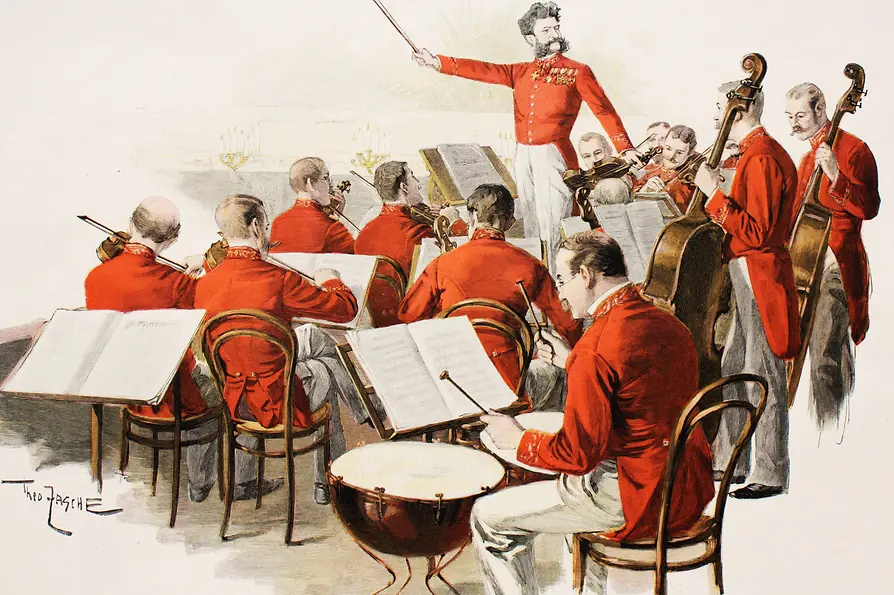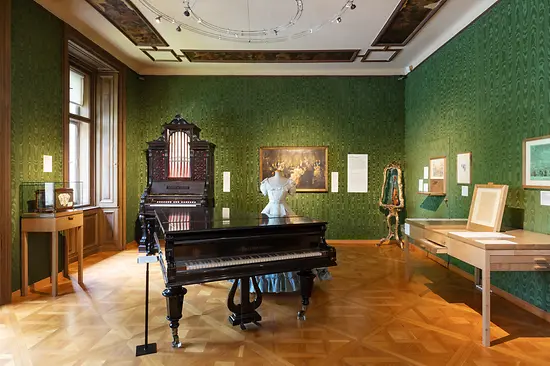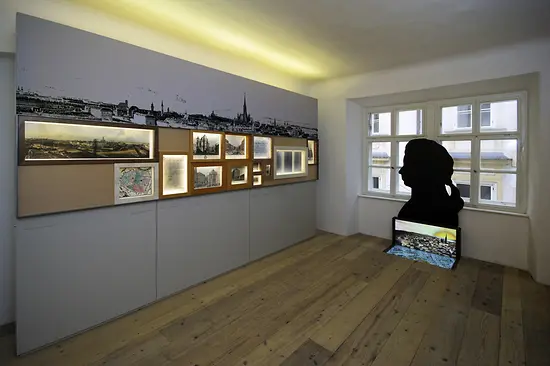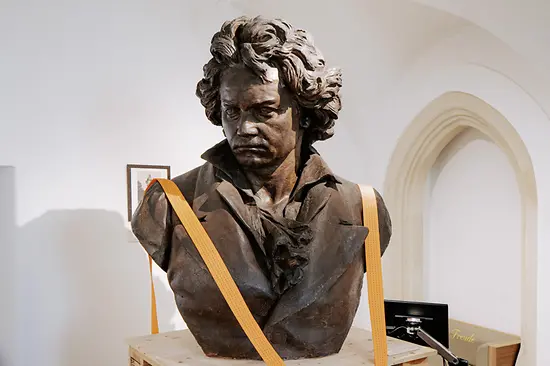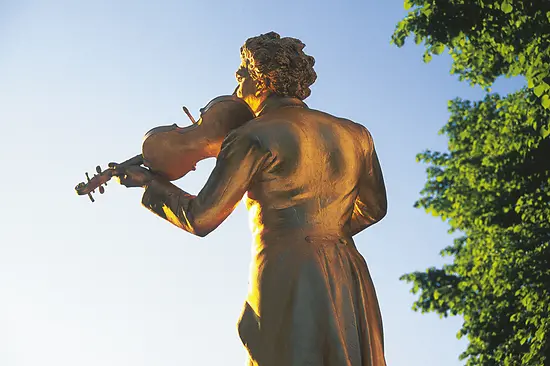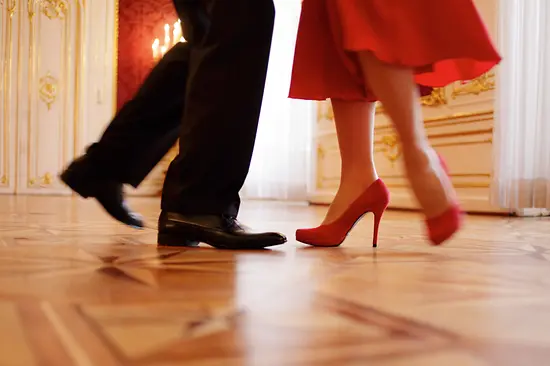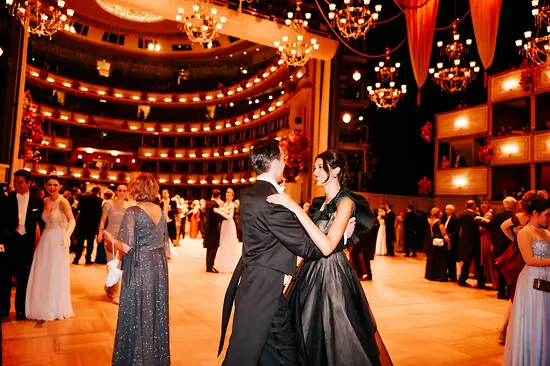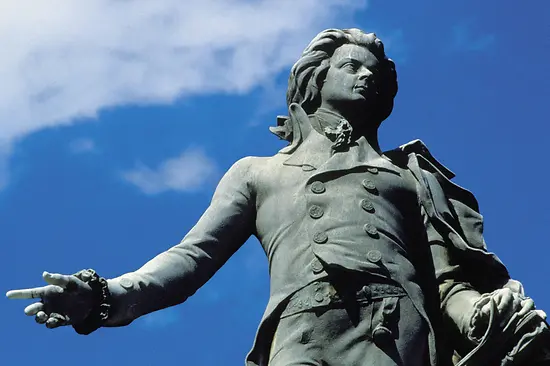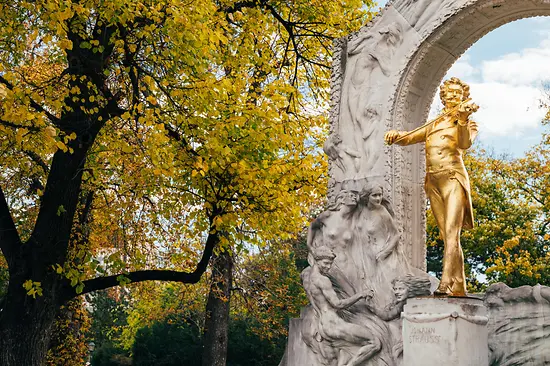Johann Strauss Apartment
Johann Strauss II (1825 - 1899) spent several years living in a prestigious town house on Praterstrasse. His apartment was on the Beletage, the most elegant and exclusive floor, and reflected his high standing at the peak of his career. The beautiful living and working rooms of the original apartment are now a memorial to the musician – including an exciting exhibition about the Waltz King. Strauss composed his most famous waltz “On the Beautiful Blue Danube”, also known as the Danube Waltz, here in 1867.
Sophisticated retreat
Johann Strauss lived on Praterstrasse from 1863 until the 1870s with his first wife Jetty, a former opera singer. In his private life, “Schani” or “Jean”, as the Viennese also called him, kept to himself and rarely went out, especially since he had an immense workload of concerts to perform anyway (often several in one evening!).
He mainly entertained friends in his residence in what is now Johann-Strauss-Gasse (no longer standing) and in his villas in Schönau in Lower Austria and in Bad Ischl. His hobbies included playing tarot, billiards and drawing caricatures. However, Strauss himself was the subject of numerous caricaturists, a veritable talk of the town.
Objects tell the story of Strauss
The exhibition in the former residence of Johann Strauss tells the story of the composer’s life and work. In addition to original furniture and his personal musical instruments, the exhibition also features everyday objects from the great musician’s possessions as well as portraits, photographs and documents relating to his life and work.
Here are a few examples:
- Display cabinet with more than 20 ball gifts: In keeping with Viennese ball tradition, every lady (even today!) receives a small gift when she attends a ball. Back then, these were small works of art, which were often elaborately designed. They contained a pen and a piece of paper so that the lady could write down which dance she promised to whom on her dance card.
- Amati violin owned by Strauss – even the violin case is a masterpiece
- Bösendorfer baby grand piano: a gift from his friend and piano maker Ludwig Bösendorfer for Strauss’ 71st birthday in 1896. The Bösendorfer piano factory still makes premium instruments to this day.
- A (very high) standing desk: Strauss composed standing up
- Harmonium (“house organ”) dated 1884: it could be played delicately like a piano – Strauss liked to work at night.
- Playing card box with three tarot cards depicting his first wife Jetty, Johann Strauss and his third wife Adele.
- Glazed music box with the monogram J S
- Parts of the original decorative edging from the salon ceiling
- Death mask of Johann Strauss
- Earrings belonging to his wife Jetty
Other exciting Strauss locations in Vienna:
- Johann Strauss Monument in the Stadtpark
- Johann Strauss’ tomb at the Central Cemetery
- House of Strauss
- Strauss walk
- Praterstraße 54, 1020 Wien
- https://www.wienmuseum.at/johann_strauss_wohnung
Prices
- Free admission for young people under 19 years of age
- 1st Sunday of the month: Free admission
Opening times
- Tu - Su, 10:00 - 13:00, 14:00 - 17:00
Closed: January 1, May 1, December 25
Accessibility
Seeing eye dogs allowed
Exhibition areas on 1st floor accessible via steps.



